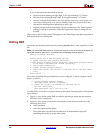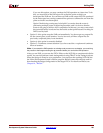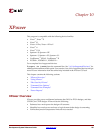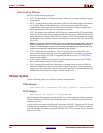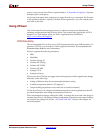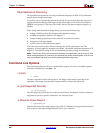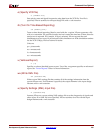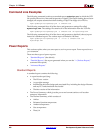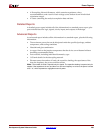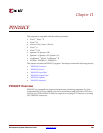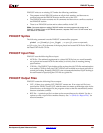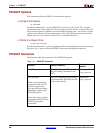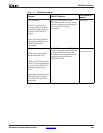
202 www.xilinx.com Development System Reference Guide
Chapter 10: XPower
R
Command Line Examples
The following command produces a standard report, mydesign.pwr, in which the VCD
file specifies the activity rates and frequencies of signals. The output loading has not been
changed; all outputs assume the default loading of 10pF. The design is for FPGAs.
xpwr mydesign.ncd mydesign.pcf -s timesim.vcd
The following command does all of the above and generates a settings file called
mysettings.xml. The settings file contains all of the information from the VCD file.
xpwr mydesign.ncd mydesign.pcf -s timesim.vcd -wx mysettings.xml
The following command does all of the above and generates a detailed (verbose) report
instead of a standard report. The verbose report is limited to 100 lines.
xpwr mydesign.ncd mydesign.pcf -v -l 100 -s timesim.vcd -wx
mysettings.xml
Power Reports
This section explains what you can expect to see in a power report. Power reports have a
.pwr extension.
There are three types of power reports:
• “Standard Reports” (the default)
• “Detailed Reports” (the report generated when you run the “-v (Verbose Report)”
command line option)
• “Advanced Reports”
Standard Reports
A standard report contains the following:
• A report header specifying:
♦ The XPower version
♦ A copyright message
♦ Information about the design and associated files, including the design filename
and any PCF and simulation files loaded
♦ The data version of the information
• The Power Summary, which gives the power and current totals as well as other
summary information.
• The Thermal Summary, which consists of:
♦ Airflow
♦ Estimated junction temperature
♦ Ambient temperature
♦ Case temperature
♦ Theta J-A



